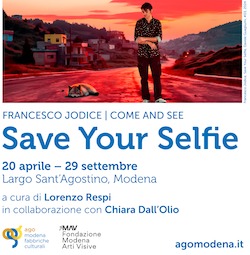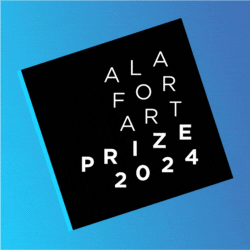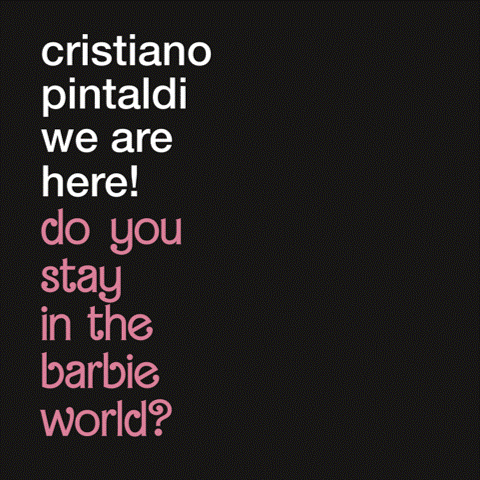
Le luminose e bianche sale della galleria bolognese P420 ospitano fino a novembre le opere dell’artista americano Stephen Rosenthal. Attivo già dalla fine degli anni Sessanta Rosenthal appartiene a quella generazione di artisti americani dediti alla riduzione che trova in questa mostra la sua concretizzazione in opere realizzate negli ultimi quindici anni.
Nella prima sala dipinti apparentemente monocromi compongono la serie denominata “Islands” nella quale macchie di colori tenui affiorano da strati di pittura sovrapposti che vengono invece cancellati nella seconda parte con “Constellations”: un nucleo di opere più recenti realizzate tramite una vera e propria riduzione fisica della pittura tramite solventi. In entrambe ad attirare l’attenzione sono il gesto pittorico così visibile e proprio quei punti di colore che sembrano emergere dalla tela come indizi, tracce di un passaggio, di una memoria.
Guendalina Piselli: Can you tell me something about this exhibition?
Stephen Rosenthal: This is a retrospective. Here you can see my last 12-14 years and it is divided in two main periods. The first is what I call the “Islands” and the second is the “Constellations”. There are not totally in contradiction but they are different. One thing is been happening in my work for many years: I am interested in mapping the experience which sounds kind of realistic, you know a proposition of realistic intention rather than astraction. And that is true but representation in this case is separated from the camera, it is not photographic I am not interested in. I mean I love photography but the powerman of basing painting on the photograph is something really different from this.
GP: In the first part of this exhibition the paintings are created by multiple level and in the second one you used something to clean, to erase the paint from the canvas…
SR: They are both concern with levels. In American critical language it is called “layern” which is actually similar to..for example obviously layer thing when you have an image on top of another and the two are not connected necessarily. But this is not the same in front of Picabia but it is this idea of combining two different inside and outside. And this is why photography is not a model because it gives you an instant tape on things and a frozen tape on things when layern is a time thing, layern is a montage thing. It is like films so you get two dimensions of life intersecting. So you have a contradiction in there.
GP: You mentioned you try to map experiences, memories…
SR: Yes, also even a space and that is what the “Constellations” is obviously about but the other is suddenly about. You can say we situated points which are near and far away. You see this is a different idea of space, you might say, than the Renaissance thing. When they invented the linear perspective you had a system which includes all the points, all points can be geometrically determined and you can reconstruct the location, the coordinates of every point in front of you. And this way it is totally different, it is a direct experience so you look there and you look there and they are two points in space but there are no system linking them, you have your experience to link them but not an outside system to which you are going back to refer to these things. So coherence of the space is realise more on discontinued experience than a continuous experience. Perspective is a continuous experience: you look there and it disappears to infinity and in that way you understand in an instant what is happening. Here you look at things and it can takes hours and days to figure out the different interactions. This is almost the key to the Constellations series, there are all this points and it starts from that. It is called connection. It is like when you see a bouquet of flowers and there are thousand of points there and they make an all symphony but it is not connected necessarily, I mean there is an obvious arrangement because it is aesthetic, but you could put it by chance and you still have this complexity.

GP: How did your work change from 70s to now?
SR: It did change but I can find a certain connection because these works are imposteur because I have always been interested in the emptiness of space. Well what we think it is the emptiness. So I have always been attracted to works which feature this emptiness even as a kid…there was this chinese gallery and at 12 years old I looked at the ink landscape and it was something it didn’t have just things and things and things but it had a kind of breathing air and a feeling of the negative space. Even in the classical paintings: Velazquez and Rothko. You know there is something that I can’t call tradition because there are many sources but this a very deep attraction. There is not a real explanation it is just there, it doesn’t need explanation.
GP: There are any difference between the paintings and the drawing for you?
SR: I can answer in many way of course. There is the chinese answer which is a very interesting thing for me. It is called the masterstricht manual which is a treaty on painting from the, I guess it is a recent thing, like from the last chinese dynasty. It introduces tracks and the are the same tracks of the calligraphy but these tracks make up the painting too. It is about to make a tree with sequences tracks. If you are writing how you make the word moustache it is also a series of tracks. There is a unity because you use the same material, the same brush, the same inks. But in western art it is quite different we have the freedom of doing a mix.
GP: In the second room before the opening there was a little piece of paper hand written with the key words of your work. Now it is the cover of the handout. Can you tell me something about it? I have the impression it was like the origin of everything…
SR: Great! We weren’t sure about it because it was in english and it was handwriting so probably not so easy to read and understand for the public, not clear enough you know. I am sort of anti theoritacion so what I am doing here is terrible because I am trying to explain myself but I feel there is a complete explanation and you don’t have to put things together in a theoretical framework because you have a full constellation of images which gives you what I am trying to do and you can put it together and you can figure it out. Maybe if you don’t want to don’t but I thought this was an interesting idea of showing what conceptualism means to me. See I don’t like the model of “professore” , you know someone, an artist, who gets up and gives explanation and says “Here it is what you are supposed to experience”. I can understand it but it seems more interesting, and this is the Constellations series, when you let people draw the lines because that is part of interaction between rather than take someone and live him down here. There are open pass and sometime it is confusing but I use that confusion to make passway through time, through space, through narrative so the painting is reconstructed in somebody head.
GP: How do you decide that your work is done?
SR: I don’t know. How does a mother decide when to give birth? When you are ready to abbond this child that’s enough, “basta”. You know get up, get lost. There is no explanation really. You know that is more someone who starts from theory and when theoretical demands of the work are mapped in the structure that is obvious, OK it is finished. But this is more experiential demands.
GP: I know you decided how to construct this exhibition...
SR: It is like my paintings. There are points I felt specific and put there specific paintings on those points and see if they worked and after I looked to specific sequences to put together. So at the end you have groupies of small which are coherent in themself but they are not necessarily together. So it is not all the same and we can play with it, play a game. They are many ways to organise them. I thought it was impossible in this space because it is large but it is still a human place. Small places are interesting because things are really concentrated in there and the works want to get out. Here it is like going to the beach and you just low down and relax.












